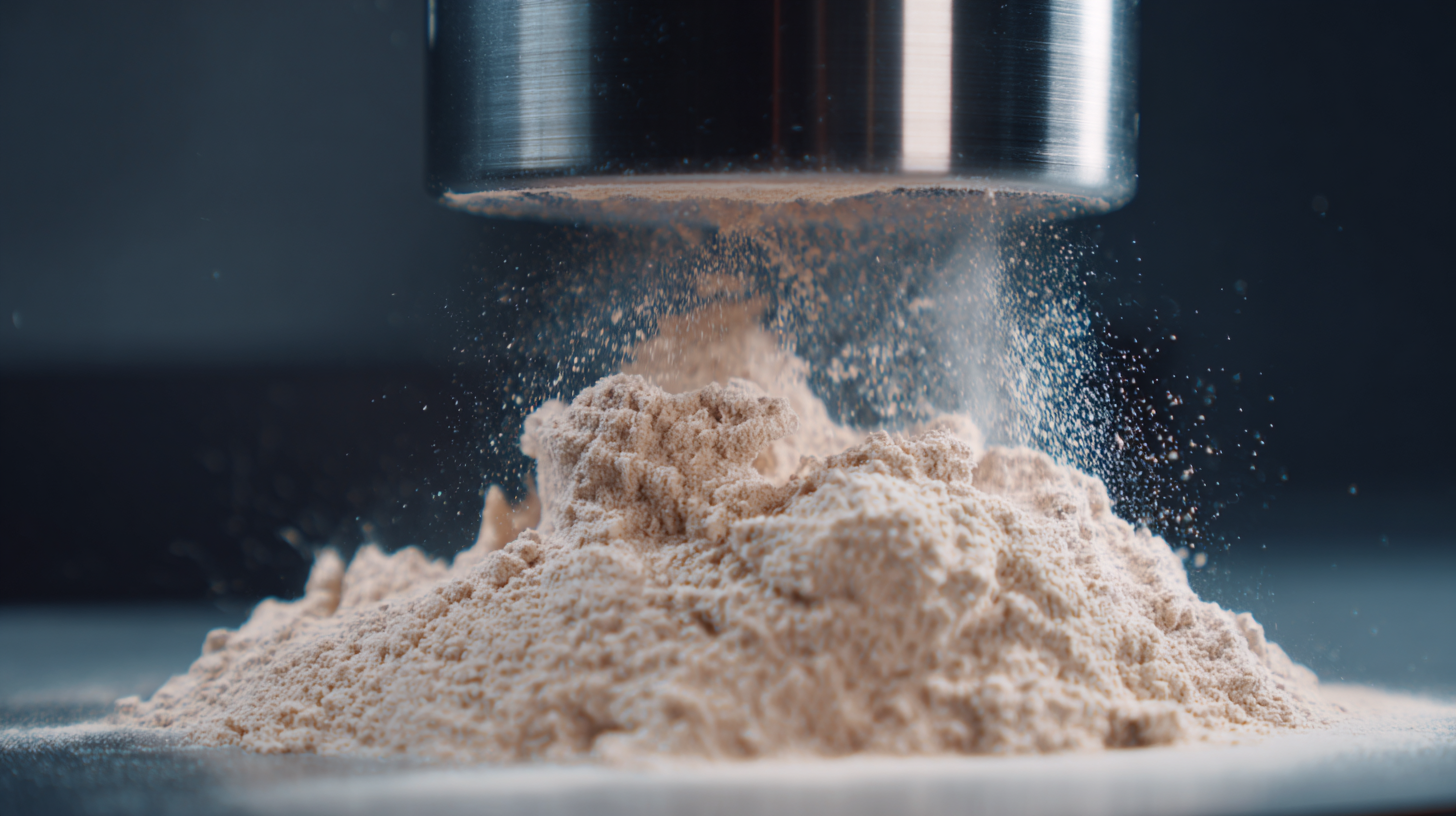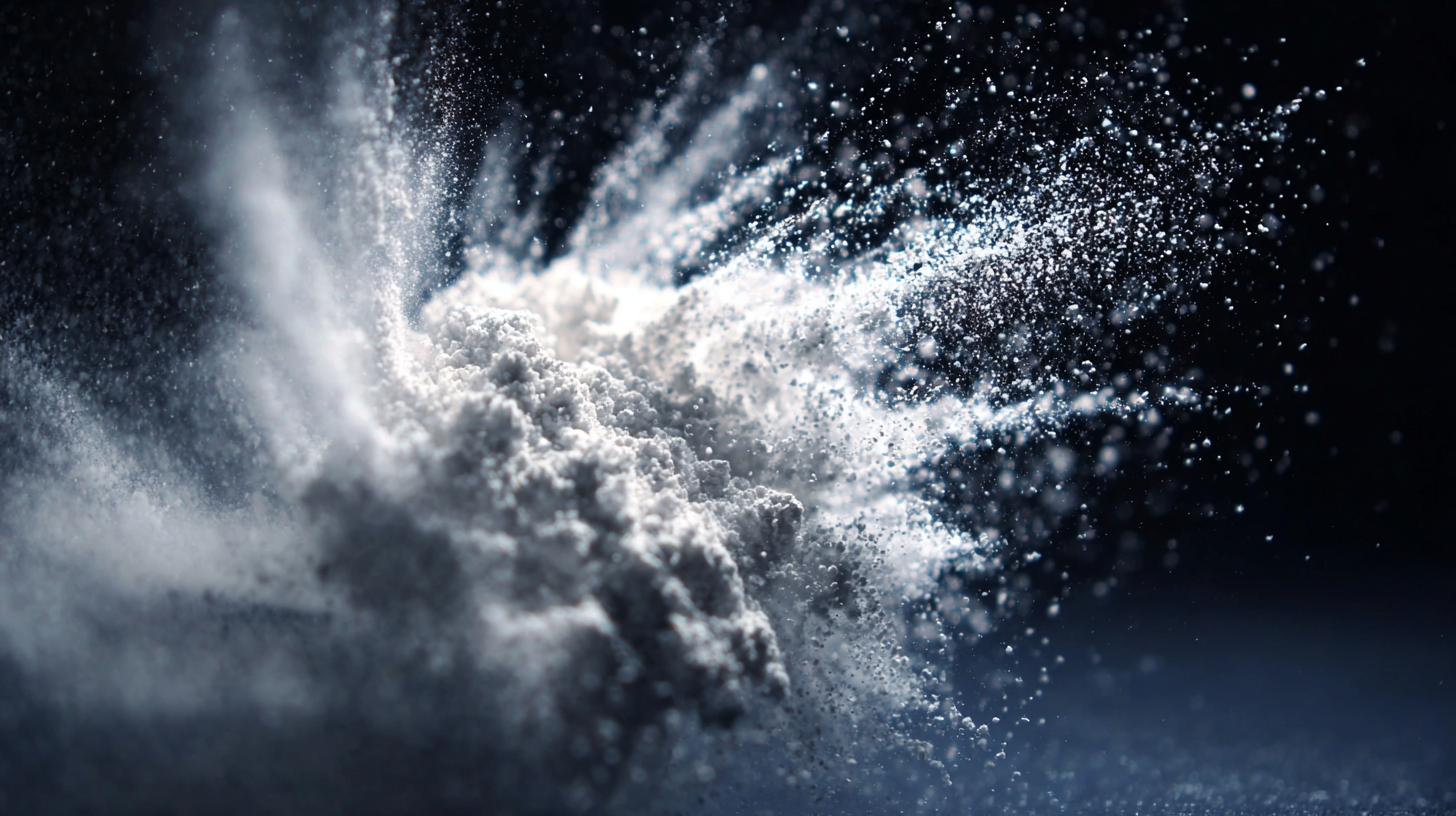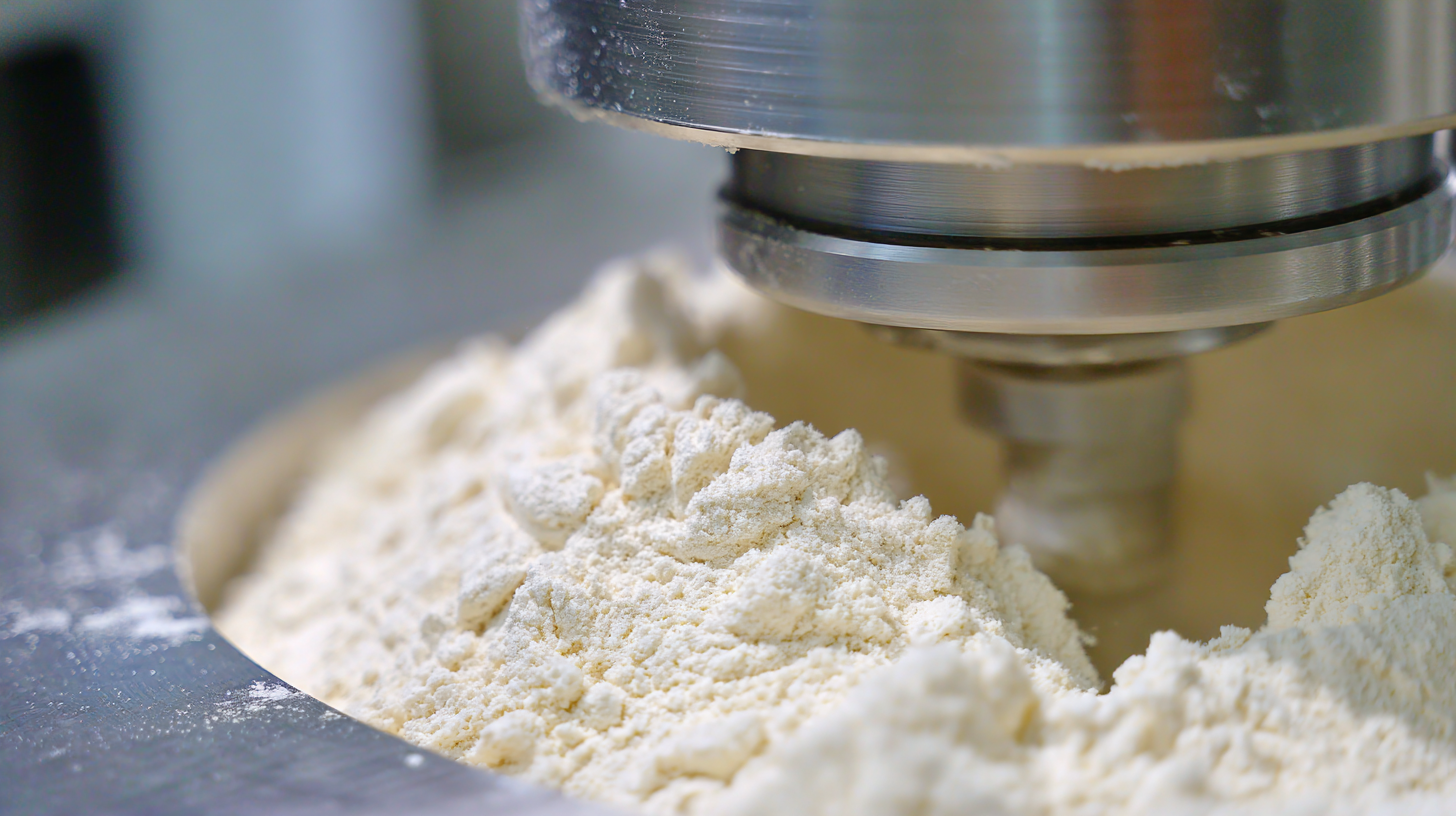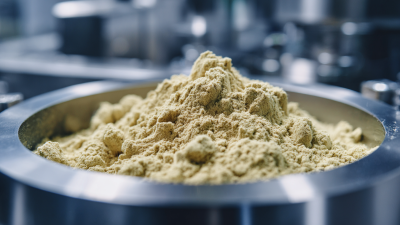
Blog
How to Master the Art of Powder Pulverization for Optimal Results
In the realm of material processing, the significance of mastering powder pulverization cannot be overstated. A well-executed pulverization process significantly enhances product quality and efficiency, which is essential as the global powder metallurgy market is projected to reach USD 30 billion by 2025, growing at a CAGR of 7% (MarketsandMarkets, 2020). The key to achieving optimal results lies in the effective use of a Powder Pulverizer, which not only reduces particle size but also ensures uniformity and consistency across batches. Advances in pulverization technology allow industries, including pharmaceuticals, food, and chemicals, to leverage tailored particle properties for enhanced product performance. As such, understanding the technical nuances and best practices in powder pulverization will empower professionals to refine their production processes and meet increasingly stringent market demands.

Understanding the Basics of Powder Pulverization Techniques
Powder pulverization is a critical process in various industries, including pharmaceuticals, food production, and materials engineering. Understanding the fundamentals of pulverization techniques is essential for mastering this art. The process typically involves reducing the particle size of solid materials to enhance their reactivity, ensure uniform distribution, and improve solubility. According to a recent market report by Research and Markets, the global powder processing market is projected to grow at a CAGR of 6.1% from 2023 to 2028, highlighting the increasing demand for effective pulverization methods.
There are several pulverization techniques, including mechanical milling, jet milling, and cryogenic grinding. Mechanical milling employs mechanical forces to reduce particle size, which can be efficient for various materials. Jet milling, on the other hand, uses high-velocity air streams to achieve ultra-fine particles, making it ideal for pharmaceuticals where precise particle size distribution is crucial. Data from the American Institute of Chemical Engineers (AICHE) indicates that optimizing these techniques can lead to a reduction in production costs by up to 20%, emphasizing the importance of mastering powder pulverization for both quality and economic efficiency.
Powder Pulverization Techniques Efficiency
This chart illustrates the efficiency of different powder pulverization techniques based on particle size reduction and energy consumption. The techniques evaluated are Hammer Mill, Jet Mill, and Ball Mill.
Choosing the Right Equipment for Effective Powder Crushing
When it comes to mastering the art of powder pulverization, the choice of equipment is paramount. A well-equipped facility can significantly influence the quality and efficiency of powder production. According to the International Journal of Powder Metallurgy, choosing the right pulverizing machine can improve particle size uniformity by up to 25%. This uniformity is essential, especially in industries like pharmaceuticals and food processing, where consistent particle size affects both the dissolution rate and flavor distribution.
One crucial factor to consider is the type of material being processed. For instance, hard materials like metals may require a high-energy ball mill, while softer materials might be best suited for hammer mills. Reports from the Powder Coating Institute indicate that equipment should not only match the material properties but also the desired end application; using a suitable grinder for specific tasks can reduce energy consumption by approximately 30%. Additionally, features like adjustable settings and ease of maintenance can further enhance operational efficiency, ensuring optimal results and reduced downtime in powder processing endeavors.
Optimal Parameters for Achieving Desired Powder Consistency
Achieving the desired consistency in powder pulverization is crucial for a variety of applications, from pharmaceuticals to food processing. The optimal parameters include factors such as particle size, processing speed, and moisture content. Fine-tuning these elements can lead to a powder that meets specific functional requirements, enhancing solubility, stability, and bioavailability.
**Tips: When adjusting particle size, consider the application – smaller particles often provide better dispersion, while larger ones may improve flowability. Additionally, the speed of pulverization should match the material's characteristics; a faster speed can generate heat, potentially affecting the quality of heat-sensitive substances. Lastly, maintaining an optimal moisture level is essential, as too much moisture can lead to clumping, undermining the pulverization process.**
Experimentation remains key. It is advisable to conduct small-scale tests to find the perfect balance of these parameters. For instance, varying the grinding time can substantially alter the outcome, allowing for adjustments that cater specifically to your desired use. Regular monitoring and adjustments based on feedback will ensure the highest quality of powder consistency.
How to Master the Art of Powder Pulverization for Optimal Results - Optimal Parameters for Achieving Desired Powder Consistency
| Parameter | Optimal Value | Effect on Powder Consistency |
|---|---|---|
| Particle Size | 10-50 microns | Enhances flowability |
| Moisture Content | <5% | Prevents clumping |
| Temperature | 20-25°C | Maintains material integrity |
| Grinding Speed | 3000-5000 RPM | Optimizes particle breakage |
| Mixing Time | 5-10 minutes | Ensures uniform consistency |
Common Mistakes to Avoid in Powder Pulverization Processes
 When engaging in the powder pulverization process, avoiding common mistakes can significantly enhance the quality and efficacy of the results. One prevalent error is inadequate particle size analysis. According to a recent report by the International Journal of Mineral Processing, achieving optimal particle size distribution is crucial, as it directly influences the reactivity and performance of powdered materials. Neglecting this analysis can lead to inefficient processes, resulting in as much as a 30% increase in energy consumption.
When engaging in the powder pulverization process, avoiding common mistakes can significantly enhance the quality and efficacy of the results. One prevalent error is inadequate particle size analysis. According to a recent report by the International Journal of Mineral Processing, achieving optimal particle size distribution is crucial, as it directly influences the reactivity and performance of powdered materials. Neglecting this analysis can lead to inefficient processes, resulting in as much as a 30% increase in energy consumption.
Another critical mistake is insufficient control over environmental factors such as temperature and humidity during pulverization. A study by the American Institute of Chemical Engineers reveals that inconsistent conditions can lead to agglomeration, which adversely affects the uniformity of particle size and composition. Maintaining a controlled environment can enhance the effectiveness of the pulverization process by ensuring a more consistent particle morphology, ultimately leading to better product quality and performance.
By recognizing and rectifying these common pitfalls, producers can realize substantial improvements in their powder pulverization processes.
Safety Precautions and Best Practices for Powder Handling
When handling powders, safety precautions are essential for minimizing risks associated with inhalation, skin contact, and chemical reactions. First and foremost, personal protective equipment (PPE) such as gloves, goggles, and masks should be worn at all times to safeguard against fine particles that can become airborne. A well-ventilated workspace, equipped with fume hoods or local exhaust systems, helps reduce inhalation risks further by ensuring that any airborne particles are effectively removed from the breathing zone.

In addition to personal safety measures, proper storage and handling of powders play a crucial role in preventing accidents. Powders should be stored in clearly labeled, sealed containers to avoid cross-contamination and to ensure easy identification. Utilizing appropriate tools such as scoops or spatulas can mitigate the risk of spills and unintended reactions, especially with reactive materials. Regular training for personnel on the specific properties of the powders being handled, as well as on emergency procedures, is vital to maintaining a safe working environment.
Related Posts
-

Ultimate Guide to Choosing the Best Powder Pulverizer for Your Industrial Needs
-

How the Best Powder Pulverizer Transforms Food Processing: Industry Case Studies and Insights
-

How to Choose the Right Powder Mixer for Your Industrial Needs
-

Challenges in Selecting the Right Blister Packing Machine for Your Production Needs
-

Mastering Natoli Tablet Press Techniques for Optimal Performance
-

Elevating Manufacturing Standards with the Best Capsule Loader Machine



